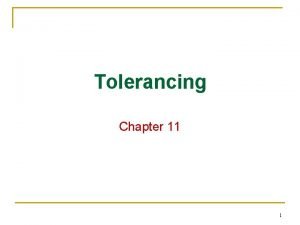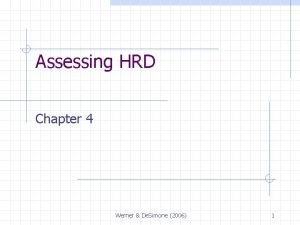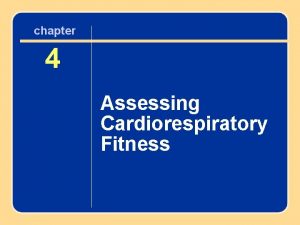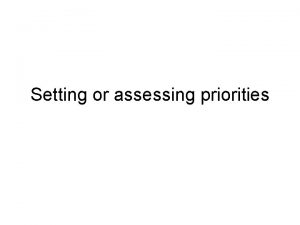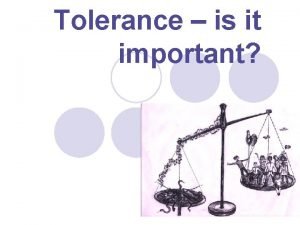Assessing Pain Charts When Testing Pain Tolerance Mikah




















- Slides: 20

Assessing Pain Charts When Testing Pain Tolerance Mikah Jones Rockdale Magnet School for Science and Technology

Introduction • Many hospitals use pain charts but there isn’t a pain chart(s) out there that is the best to use or more widely used. • Pain tolerance is associated with pain. Every one individual has a different pain tolerance than another. Race and gender are factors that can play an important role in pain tolernace.

Rationale • If hospitals are using just any pain chart, then that pain chart might not actually be helping the patients there. • It would be helpful to the patient and doctor to have a pain chart that is effective and easy to use and can be used on any type of pain

Purpose • The purpose of this project is to see which pain chart is the easiest to use. • Another purpose of this project is to show the difference in pain tolerance in gender and race groups.

4 Pain Charts Being Used

Background • In a study (Ferreira-Valente, Ribeiro, Jensen. February 2011. ), it tested 4 Pain charts on how well it can measure pain intensity. • 4 Pain Charts: Visual Analogue Scale (VAS) Numerical Rating Scale (NRS) Verbal Rating Scale (VRS) Faces Pain Scale-Revised (FPS-R) • The participants did 4 20 -second trials of the Cold Pressor Test(CPR). The temperatures for the cold water were 1, 3, 5, and 7, degrees Celsius. • Results showed that the Numerical Rating Scale was the most responsive, and was able to detect gender pain intensity differences.

• In another study found (Kenneth, Woodrow, Friedman, Sieglaub, Coleen. 1972) they tested the pain tolerance between different age, races, and genders. • Results showed 3 things: 1. Pain Tolerance decreases with age 2. Men tolerate more pain then women 3. Whites tolerate more pain than Asians.

Hypotheses • Main hypothesis: the Numerical Rating Scale will be the easiest to use compared to the other pain charts being used. • Sub Hypothesis: A. Females will experience a greater pain tolerance than males • Sub Hypothesis: B. Whites will experience a higher pain tolerance than race groups

Experimental Design Diagram Male Female Manowski Pain Scale Numerical Rating Scale Pain Coping Chart Caucasian 5 5 5 Faces Pain Scale. Revised 5 African. American Hispanic/Latino 5 5 5 5 Asian 5 5 Caucasian 5 5 African. American Hispanic/Latino 5 5 5 5 Asian 5 5

Procedures Consent forms are given out Consent forms are returned and start the Cold Pressor Test Container is filled with cold water Data is collected analyzed Participants take their hand out and use pain chart Participants put their hands in the water for 1 minute

Data Analysis • 38 Participants were used overall • 19 Males, 19 Females • 10 Blacks, 10 Whites, 9 Asians, 9 Hispanics

Ease of Use Chart Type Average Ease of Use MPS 1. 5263 NRS 1. 3158 PCC 1. 5 FPSR 1. 605 Average Pain Score

Gender Vs. Pain Score Gender Average Pain Score Male 4 Female 4 Race Vs. Pain Score

Conclusions • The Numerical Rating Scale was found to be the easiest pain chart to use. The main hypothesis was supported • Sub hypothesis A and B were both rejected • Overall pain charts were found easy to use • The use of the pain coping chart would not be used in other types of pain since it has a higher average pain score

Acknowledgments • I would like to thank Scott Bolen for helping me with my project and answering any questions that I had along the way. • I would also like to thank the volunteers for being apart of my project.

Literature Cited • Woodrow, K. , Friedman, G. , Slegelaub, A. , Collen, M. (November). Pain Tolerance: Differences According to Age, Sex and Race. Retrieved from http: //www. psychosomaticmedicine. org/content/34/6/ 548. short • Ferreira-Valente, M. , Ribeiro, J. , Jensen. M. February 2011. Validity of four pain intensity rating scales. Retrieved from http: //www. painjournalonline. com/article/S 03043959(11)00445 -3/abstract

My Accomplishments

smyrna presbyterian Christmas Walk

Soccer Team Manager

Any Questions? Assessing Pain Charts When Testing Pain Tolerance
 Mikah owen md
Mikah owen md Cellular and molecular immunology
Cellular and molecular immunology 40h6 tolerance
40h6 tolerance Logic based testing
Logic based testing Is pregnancy pain same as period pain
Is pregnancy pain same as period pain Pain x mad
Pain x mad Pms vs pregnancy symptoms
Pms vs pregnancy symptoms Assessing hrd needs
Assessing hrd needs Assessing motivation to change
Assessing motivation to change Module 4 topic 1 assessing and managing risk
Module 4 topic 1 assessing and managing risk Ways to address grammar in the writing classroom ppt
Ways to address grammar in the writing classroom ppt Dominant work values in today's workforce
Dominant work values in today's workforce Inherent risk
Inherent risk Assessing cardiorespiratory fitness
Assessing cardiorespiratory fitness Manual for assessing safety hardware
Manual for assessing safety hardware Assessing opportunity cost involves
Assessing opportunity cost involves Assessing value for money
Assessing value for money A nine box matrix requires assessing employees on ________.
A nine box matrix requires assessing employees on ________. What are the ppst domain
What are the ppst domain Cultural dynamics in assessing global markets
Cultural dynamics in assessing global markets Amc math assessment
Amc math assessment


